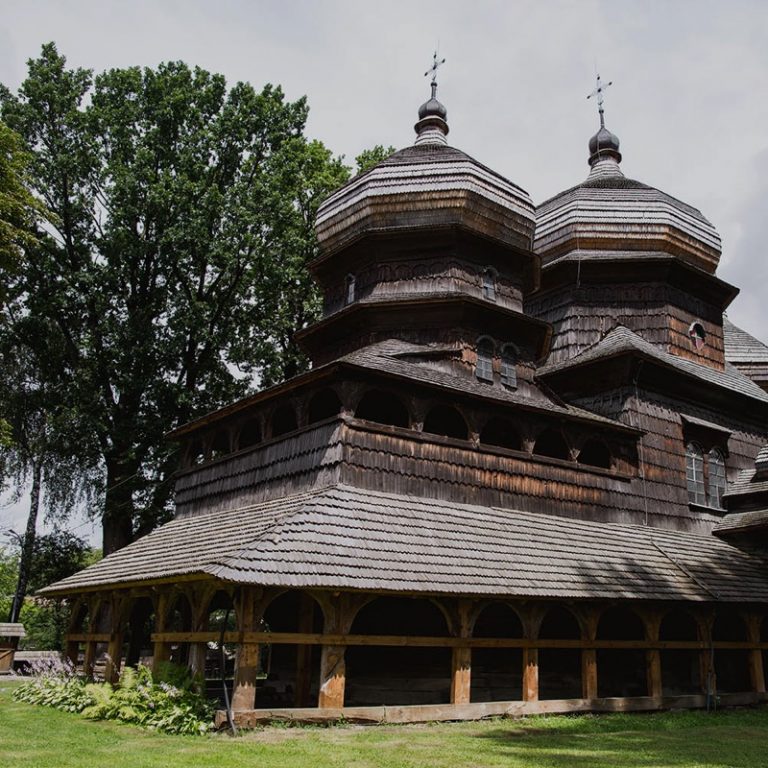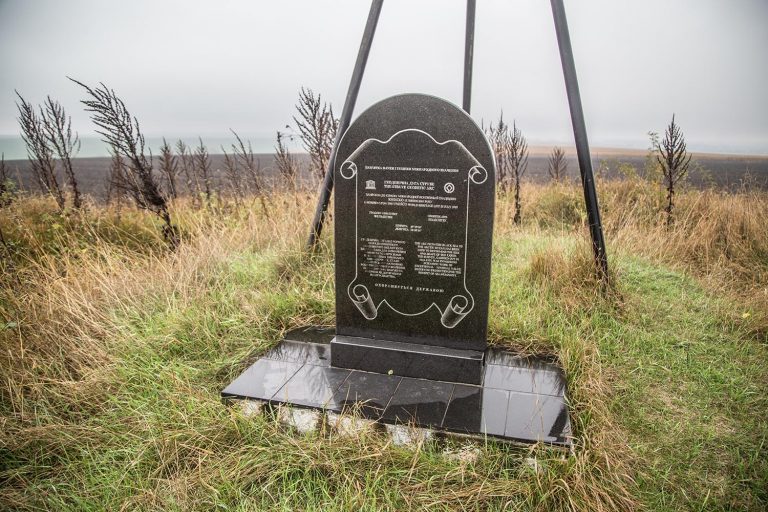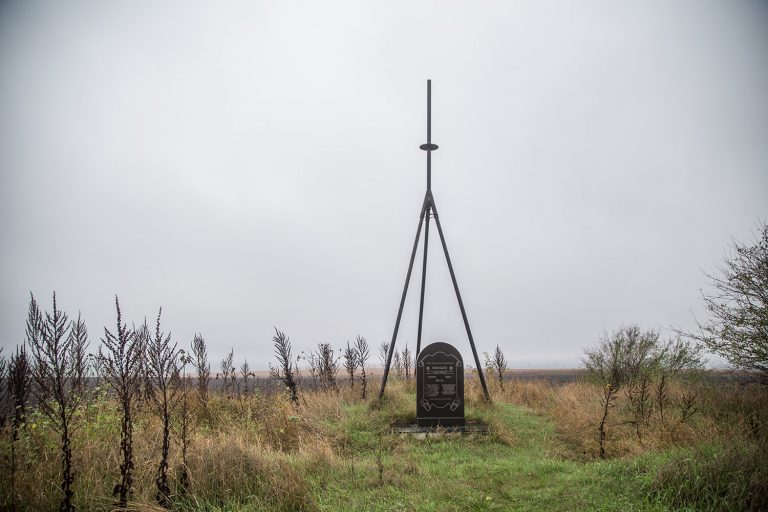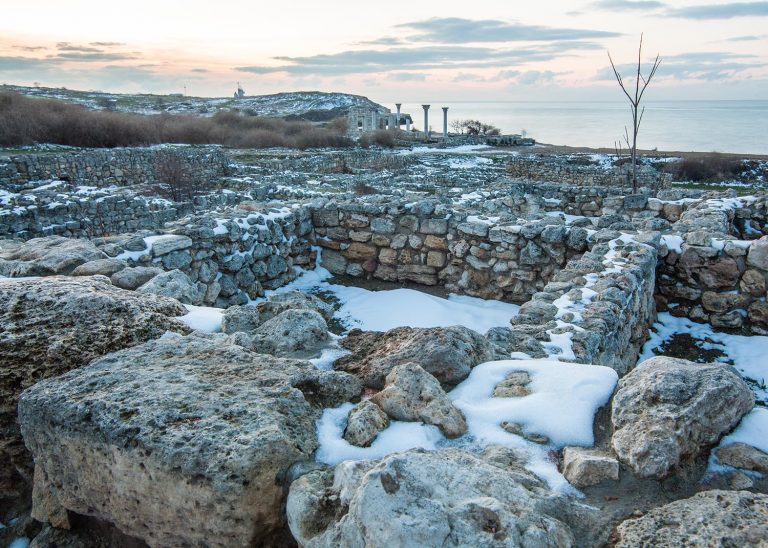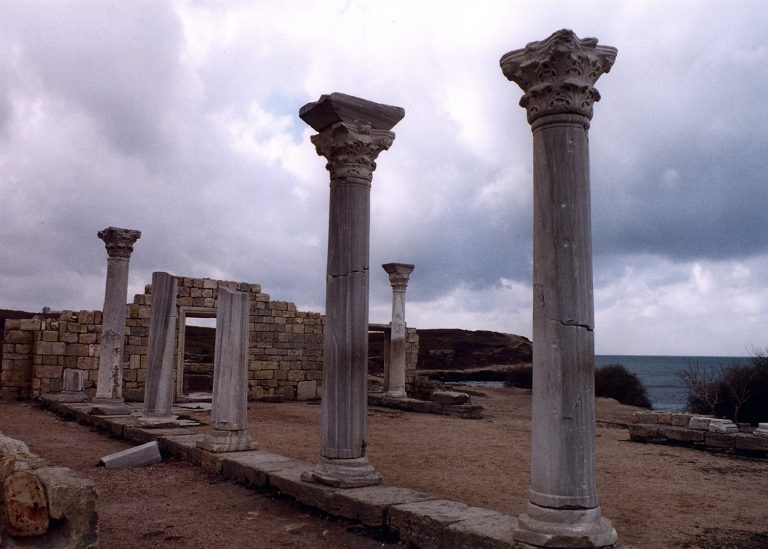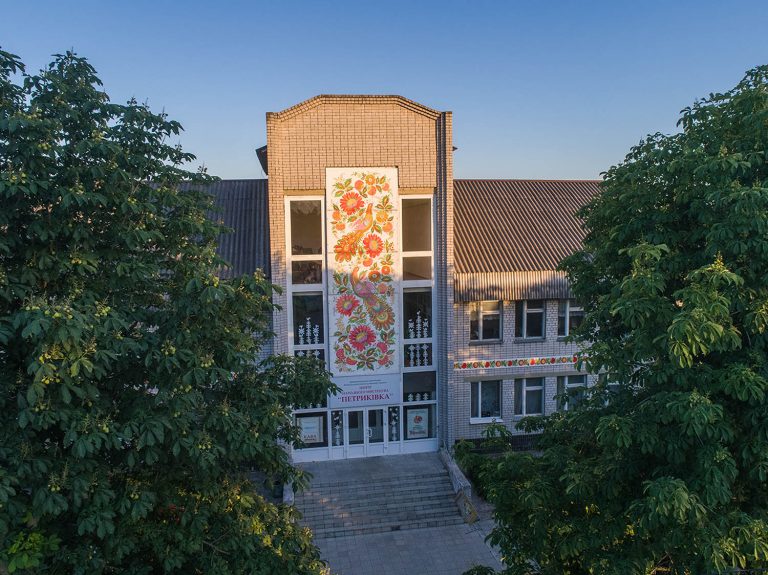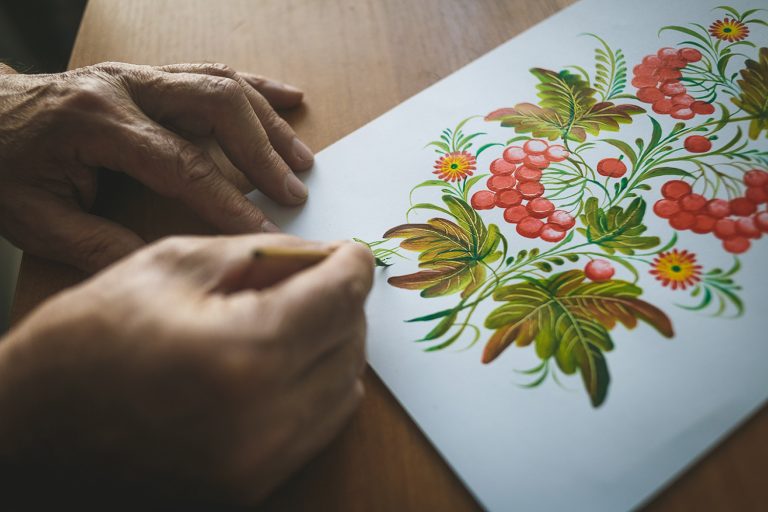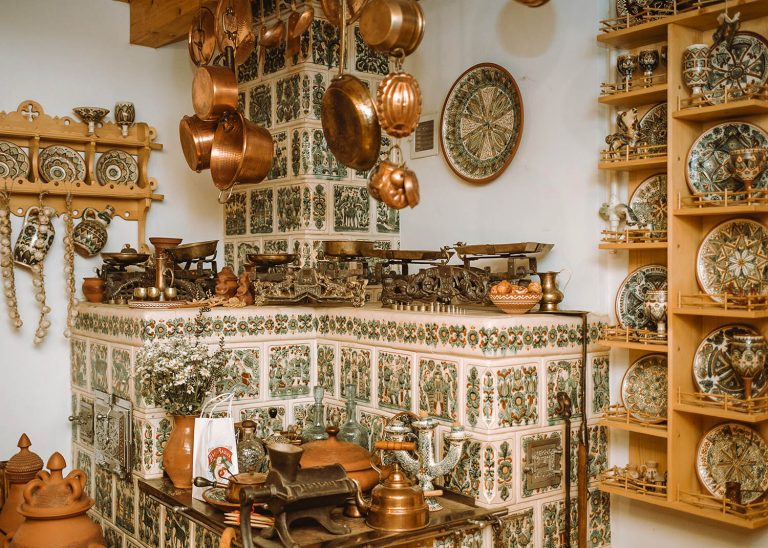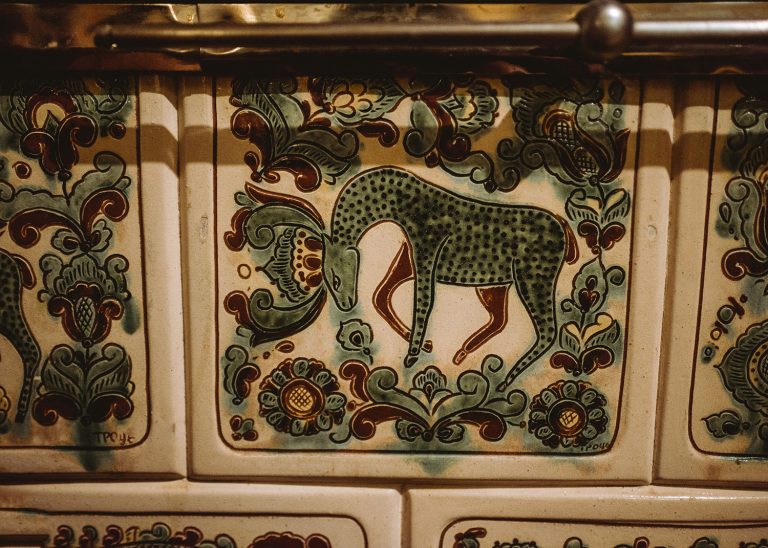Masterpieces of human creative genius, objects that bear exceptional testimony to a cultural tradition, or outstanding developments in architecture or technology: these are just a few of the criteria for the UNESCO World Heritage List, which was created for the promotion and protection of unique sites worldwide. Seven sites in Ukraine — including churches, old-growth forests and a historic city centre — are on the list. Another three elements of Ukrainian culture have been added to the Representative List of the Intangible Cultural Heritage of Humanity. This publication, produced jointly by Ukraïner and the Ukrainian Institute, marks the 75th anniversary of UNESCO.
Founded in 1945 as a specialised agency of the United Nations, UNESCO fulfils the mission of promoting peace and security through international cooperation in the fields of education, science and culture. Its programmes focus on areas that include access to education, international scientific cooperation, the preservation of tangible and intangible heritage, and the free flow of information.
The agency has an extended network of offices — regional, cluster and national — as well as institutes and partner organisations. It has almost 200 member states, which finance the projects through an established system of contributions.
UNESCO and Ukraine
Ukraine has been a member state since 1954, and has since initiated a number of international programmes and projects: notably, pushing for the development and adoption of the Declaration on Race and Racial Prejudice in 1978.
Two Ukrainian cities are members of the UNESCO Creative Cities Network; nationwide, there are a number of UNESCO ASPNet schools and UNESCO Chairs that take part in international educational projects. Since the Russian invasion and temporary occupation of Crimea, UNESCO has been monitoring the situation on the peninsula within its field of competence.
As of 2020, seven Ukrainian sites (six cultural and one natural) are on the UNESCO World Heritage List. Meanwhile, three elements of Ukrainian culture were added to the Representative List of the Intangible Cultural Heritage of Humanity. A number of biosphere reserves are also listed in the World Network of Biosphere Reserves, and quite a few Ukrainian sites are on the UNESCO Tentative List.
Cultural and natural heritage
UNESCO World Heritage sites are cultural and natural treasures that are considered to belong to all humankind. Each site has to meet at least one of the criteria formulated by UNESCO for cultural and natural heritage. This status guarantees protection, attracts the attention of local authorities and communities, gives priority in raising funds for restoration work, and promotes the development of tourism.
Kyiv: St Sophia’s Cathedral and the adjacent monastery complex, Kyiv Pechersk Lavra.
Both of these architectural complexes, located in the historic heart of Kyiv, represent the cultural heritage of the Middle Ages and the early modern period.

Photo by Dmytro Bartosh.
St Sophia’s Cathedral was erected by Yaroslav Mudryi (Yaroslav the Wise — tr.) in the 11th century, soon after the Christianisation of Kyivan Rus. The cathedral symbolised the establishment of Kyiv as the capital of the Christian state; until the 13th century it was the main place of worship in Rus.
The place: St Sophia’s Cathedral and the adjacent monastery complex combine features of the Byzantine and Ukrainian baroque styles. The architectural ensemble includes a bell tower, the archbishop’s residence, the refectory, the Zaborovsky gate, the southern entrance tower, monastic cells for the cathedral elders, and lodgings for novice monks, surrounded by a wall.
What makes it unique: St Sophia’s Cathedral is one of the major architectural monuments of the early 11th century, which influenced the design and decoration of churches in Kyivan Rus and, thereafter, across Eastern Europe. ‘Sofiia Kyyivska’ captures the changes that occurred in the Byzantine architectural and artistic traditions, which took on a new meaning in the local context. The cathedral’s ancient interior has been preserved, as well as the largest collection of mosaics and frescoes of that period. The Virgin Oranta (a depiction of the Virgin Mary in prayer — ed.), which graces the cathedral’s main altar, is the best-preserved image from the Kyivan Rus period.
Today: ‘Sofiia Kyyivska’ National Reserve is a museum complex encompassing dozens of architectural monuments. The pieces that are stored and exhibited here include archeological finds and works of decorative art.

Photo by Dmytro Bartosh.
Kyiv Pechersk Lavra is a monastic complex of the Ukrainian Orthodox Church, founded in 1051. The Lavra’s spiritual and educational influence helped to promote the Orthodox faith and culture throughout Kyivan Rus, from the 17th to the 19th century.
The place: The Kyiv Pechersk Lavra complex consists of several key landmarks: the Dormition Cathedral, the Gate Church of the Holy Trinity, the Great Bell Tower, All Saints Church, the Refectory Church, the monastery’s defensive walls and towers, a network of caves, the Church of the Exaltation of the Holy Cross, and the Church of the Nativity of the Virgin. The ancient church of the Saviour at Berestove, though located outside the walls of the Lavra, belongs to the same historical and architectural ensemble.
What makes it unique: Kyiv Pechersk Lavra is an architectural ensemble with two unique underground complexes, alongside monastic buildings that took shape over a period of almost 900 years. The buildings testify to the evolution in architectural styles and improvements in structural engineering. For a long time, the Kyiv Pechersk monastery was among the most important Christian cultural and pilgrimage centres of the world.
Today: The National Kyiv Pechersk Historical and Cultural Reserve is a museum complex comprising around 100 historical and cultural landmarks. There are several museums on the site, with collections that include ancient manuscripts, icons, works of embroidery, and etchings. Services are still held at the Lavra: there are several working churches, a monastery, the Kyiv Theological Academy, and the residence of the metropolitan (the head of an ecclesiastical province in the Ukrainian Orthodox Church — ed.).
Lviv — the Ensemble of the Historic Centre
The ensemble of the historic centre of Lviv includes the main part that covers Zamkova Hora (Castle Hill — tr.), the adjacent territories and the city centre, and St Yura Cathedral on the Sviatoyurska Hora (St Yurii Hill — tr.).

Photo provided by Skerion studio.
Vysokyi Zamok (High Castle — tr.) and Pidzamche (the district around Castle Hill — tr.) are the oldest parts of the city, nestled in the Lviv basin since the fifth century. The Pidzamche borders the city centre, which began to develop in the 14th century and is a well-preserved example of Eastern European urban planning.
The place: Vysokyi Zamok and Pidzamche are made up of Castle Hill, the remains of the 13th-century castle, and the system of streets and squares that took shape between the 13th and 17th century. The city centre includes monasteries and residential buildings from the Renaissance and Baroque eras, and parks — built on the site of medieval fortifications — plus various other constructions from the past two centuries.
What makes it unique: Vysokyi Zamok and Pidzamche have retained their original topography and historic buildings. The centre is a harmonious combination of places of worship, public buildings and dwellings, for the city’s various ethnic communities.
Today: Poised on the top terrace of the Vysokyi Zamok park are the remains of the castle fortifications, a television tower, the offices of Lviv TV centre, and an artificial mound with an observation platform. On the lower terrace are the main walkway, a viewing deck, and an artificial grotto with lion sculptures. The highlights of the historic city centre include the Town Hall, several well-known religious buildings (the Armenian Cathedral, Latin Cathedral, Dormition Church, Dominican Church, and Bernardine Monastery), plus numerous museums, coffee shops and restaurants.

Photo provided by Skerion studio.
St Yura Cathedral is an architectural ensemble in the Baroque tradition, built on a hill southwest of the medieval city centre. The building of the cathedral was initiated by metropolitan Atanasii Sheptytskyi, and was supervised by German architect Bernard Meretyn.
The place: The complex consists of St Yura Cathedral, the rococo residence of the metropolitan, the metropolitan’s gardens, the bell tower — with the oldest bell in Ukraine, cast in 1341 — and a stone wall with two gates.
What makes it unique: The cathedral was the centre of the Ukrainian Greek Catholic Church, and remains Lviv’s key Baroque architectural monument, where the cultural and architectural traditions of Eastern and Western Europe meet.
Today: The St Yurii Cathedral is part of the Halychyna Metropolis in the Ukrainian Greek Catholic Church. The cathedral boasts a collection of holy relics and icons; as well as regular church services, it serves as a meeting place for various societies and a choir.
slideshow
Struve Geodetic Arc
Struve Geodetic Arc is a chain of survey triangulations that was established over a 40-year span in the 19th century, by astronomer Friedrich Georg Wilhelm Struve. The arc stretches 2,820 kilometres and passes through ten European states, from the Barents to the Black Sea. Its southernmost point is located in Ukraine, on the bank of the river Danube, in the village of Stara Nekrasivka.
The place: There are 265 main station points on the chain, and 34 of the best-preserved ones are on UNESCO’s World Heritage List. Four of them are in Ukraine: ‘Katerynivka’, ‘Felshtyn’ and ‘Baranivka’ in Podillia, and ‘Staronekrasivka’ in Bessarabia.
What makes it unique: The arc’s measurements of the 25th meridian made it possible to establish the size and shape of the planet almost exactly. These measurements were used by scientists until the end of the 20th century, when it became possible to fine-tune them using research carried out by satellites and computers.
Today: The main station points of the Struve arc are marked in various ways: with iron crosses, cairns, or obelisks. ‘Katerynivka’, ‘Felshtyn’ and ‘Baranivka’ are marked with granite boards engraved with the name of the point and its coordinates. Staronekrasivka point is marked with a quadrangular cast-iron obelisk on a stone pedestal.

Photo by Pavlo Pashko.
The primeval beech and old-growth forests of the Carpathians and other regions of Europe
A natural world heritage site that initially covered the Carpathian forest reserves on the territory of Prešov region in Slovakia and Zakarpattia in Ukraine. Later on, forested areas in Germany and another nine European countries (Austria, Albania, Belgium, Bulgaria, Spain, Italy, Romania, Slovenia and Croatia) were added to the list.
The place: Until 2017, the site included six areas of forest, protected by the Carpathian Biosphere Reserve and Uzhanskyi National Park. Later additions include the national parks of Synevyr, Zacharovanyi Krai (Enchanted Land — tr.) and Podilski Tovtry, as well as the Gorgany and Roztochchia nature reserves.
What makes it unique: The primeval beech forests are an example of untouched ecosystems in the temperate zones. They provide a valuable genetic pool for the European beech tree, and the best conditions for carrying out research into its evolution.
Today: These areas of forest span 12 European countries; more than 25% of them are in Ukraine. Among the forest sites on the Heritage List, these forests are home to particularly unique flora and fauna, especially species that have adapted to live in caves.

Photo by Vasyl Salyha.
The Residence of Bukovyna and Dalmatia Metropolitans
An architectural ensemble in Chernivtsi, built under the supervision of Czech architect Josef Hlávka in the 19th century. It was the centre of the Bukovyna Orthodox Metropolis in the times of the Austro-Hungarian Empire.
The place: The residence consists of three monumental buildings — the metropolitan’s building, the seminary and the monastery — and an arboretum. The estate is surrounded by a wall with a front gate. The metropolitan’s building contained the living quarters, as well as administrative premises and assembly rooms. The first floor of the seminary building housed the Greek Orthodox Theology School of Chernivtsi University, while the seminary itself was on the second floor. In the monastery building was a school for deacons, as well as a diocese museum and monastic cells.
What makes it unique: The residence is an outstanding example of 19th-century architecture, design, and urban planning. It represents a remarkable synergy of classical architectural styles as well as the art of local ethnic groups. The residence reflects the cultural identity of the Orthodox church during Austro-Hungarian rule.
Today: In the second half of the 20th century, parts of the residence were converted into various departments of Chernivtsi University. These days, visitors can join daily guided tours of the site, conducted in different languages.

The church of St Yurii in the city of Drohobych. Photo by Oles Moskalchuk.
The Wooden Churches of the Carpathian Region
The Wooden Churches in Poland and Ukraine, situated along the northern fringe of the Carpathians, are a joint Ukrainian and Polish item on the World Heritage List. They combine several local styles of wooden church architecture: Hutsul, Halych, Boiko and Lemko.
The place: Of the 16 wooden churches on the list, eight are in Ukraine: St Michael’s Cathedral in Uzhok; the Church of the Ascension in Yasinia, Zakarpattia; the Church of the Nativity of the Virgin Mary in Nyzhnii Verbizh; the Church of the Holy Spirit in Rohatyn; Holy Trinity Church in Zhovkva; the Descent of the Holy Spirit Church in Potelych; and the Cathedral of the Holy Virgin Mary in Matkiv, Halychyna.
What makes it unique: These are the best-preserved examples of wooden churches built in the traditional style with horizontal logs. They bear distinct features of both the architectural traditions of the Carpathian region and Orthodox church design. Over the years, the wooden structures were repaired using traditional methods: thanks to these efforts, their authenticity has been preserved.
Today: In most of the churches, you can still see rare iconostases and icons that are of great interest to tourists. Six of the Ukrainian churches on the list still hold religious services, while those in Rohatyn and Drohobych have been turned into museums.
slideshow
The Ancient City of Tauric Chersonese and its Chora
All that is left of an ancient ‘polis’, or city state, surrounded by agricultural suburbs — the ‘chora’. These remains can still be seen today in the southwestern part of Crimea, on the territory of the modern-day city of Sevastopol. Tauric Chersonese was a classic Greek polis, with a democratic system of government.
The place: The site has two main parts: the ruins of the settlement of Chersonese, the ancient city founded at the end of the fifth century BC, and the Heraclean chora — agricultural lands that were divided into separate plots around Chersonese in the fourth century BC.
What makes it unique: Tauric Chersonese was an important political and economic hub in northern Prychornomoria, and a cultural crossroads where the Greek, Roman and Byzantine empires interacted with the inhabitants of the lands north of the Black Sea. It played a key role in the spread of Christianity in southeastern Europe. The remains of the city layout and the chora, based on the Hippodamian Plan (grid plan — ed.), attest to the democratic organisation of land in Ancient Greek society.
Hippodamian Plan
The grid-like plan of city layout, popularised by the Ancient Greek architect and city planner, Hippodamus of Miletus.Today: At the time of the Russian occupation of Crimea in 2014, the Tauric Chersonese museum and archeological site held over 200,000 exhibits discovered during the excavations. These include the remains of the defensive walls, residential areas, baths, artisans’ workshops, Christian churches, and a theatre.
Due to military and commercial use of the site under Russian occupation, the world heritage site of Tauric Chersonese is threatened with destruction. One of the ancient chora plots was destroyed in 2015.
Intangible Cultural Heritage
slideshow
Petrykivka decorative painting
Petrykivka painting is a variety of Ukrainian decorative and ornamental folk painting that originates from the village of Petrykivka in Podniprovia. The people of Petrykivka decorate their homes, household items and musical instruments with imaginative floral designs and other natural motifs. There are examples of household items with paintings on them that date back to the 17th century.
What makes it unique: The history of Petrykivka painting goes back to older wall painting traditions that in turn go back to the traditional village ‘mazanka’ (a mud-walled hut that was traditionally whitewashed — ed.) appeared. Petrykivka ornaments are rich with symbols, meant to protect people from grief and evil. The traditions and symbolism of Petrykivka are passed on and developed from generation to generation, and are an uninterrupted cultural tradition of the Podniprovia region.
Today: The village is now home to the Petrykivka Folk Art Centre, where artisans create their works on various different surfaces. The centre hosts exhibitions, guided tours, and masterclasses. There are collections of Petrykivka paintings in the museums of the village, as well as in other cities of Ukraine and private collections.
Read more about Petrykivka in our longread: Worldwide unknown Petrykivka.
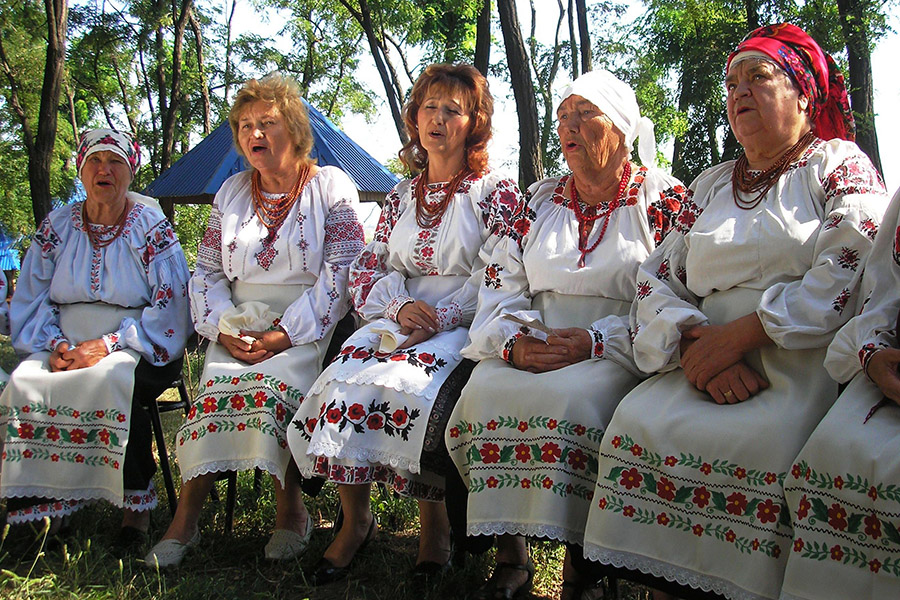
'Krynytsia' Cossack song ensemble. Photo: Yulia Ratsybarska
The Cossack Songs of Podniprovia
Songs about Cossack campaigns and battles, the lives of Cossack chieftains, and everyday Cossack life. The geography of Cossack songs covers the whole region of Podniprovia, where the Zaporizhian Siches (Cossack strongholds — ed.) were predominantly based. The songs were originally performed by men without musical accompaniment. Today they are performed mainly by women, less often by women and men together.
What makes them unique: The Cossack songs are characterised by their drawn-out melodies and plaintive performance style. The performers have a connection to the past through their ancestors and the history of the community. Most of them are over 70 years old, and have been singing this way for most of their lives.
Today: Cossack songs are mostly performed by local ensembles and groups such as ‘Krynytsia’, ‘Znakhidka’, ‘Pervotsvit’ and ‘Bohuslavochka’. In some villages, the traditions are carried on by individual performers and informal groups who gather from time to time, on major holidays. UNESCO has recognised that the continuity of Cossack songs is under threat, and that they are in need of immediate protection.
slideshow
The tradition of Kosiv painted ceramics
The tradition of Kosiv painted ceramics — in particular, dishes, ceremonial items, toys and tiles — originated in the 18th century in the villages of Hutsulshchyna, and has both practical and artistic value.
What makes it unique: The technique for producing Kosiv ceramics is straightforward. The piece is covered with white clay, dried, and painted in just three colours — green, yellow and brown — symbolising mountains, the sun and the earth respectively. The motifs depicted express the history, life, folklore, beliefs and traditions of the Hutsuls, as well as the flora and fauna of the surrounding region.
Today: The traditions of Kosiv painted ceramics are widespread in the town of Kosiv and the villages of Kuty, Pistyn, Verbovets and Staryi Kosiv. They are developed by small-scale producers and private workshops. Kosiv College has its own department of artistic ceramics. At Kosiv Museum of the Folk Art and Life of Hutsulshchyna, there is a space dedicated to Kosiv ceramics. The museum also regularly holds exhibitions and festivals.
Read more in the longread: Що таке косівська кераміка?

